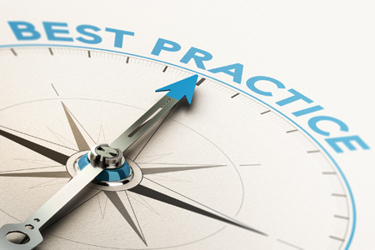No Matter Modality, A Methodology For Managing CDMOs

By Louis Garguilo, Chief Editor, Outsourced Pharma

Let’s pick up from the first part of our recent conversation with Steve Goodman, Executive Director, AAV Process Development and Manufacturing, Vertex Pharmaceuticals.
He’s been outsourcing development and manufacturing – particularly in the cell and gene therapy (CGT) space – for years. Today we’ll get his thoughts on managing CDMO relationships.
Those thoughts start with his recent experience at Vertex, where he’s proving successful at outsourcing for relatively new adeno-associated virus (AAV) vectors: “I’ve been successful because my approach to managing a CDMO is mostly agnostic to modality,” he says.
And thus, his advice below applies to small and large molecule, and CGT.
Time Invested
“My first piece of specific advice would be to understand exactly what you need,” he says of a topic introduced in part one. Relevant questions begin here:
- Are you seeing the manufacturer as an enabler to your program?
- Do you need technical expertise?
- If you have expertise, do you need an external partner focused on a particular activity or outcome?

There are projects and service providers, he says, where it is possible to place an order and get your material some weeks or months later. “Turn the crank, so to speak, like with plasmid suppliers, because the technology and provider where you place the order is well enough established.”
In most other circumstances, though, once you've made your CDMO selection and intentions known, you should be “fully ready to be heavily involved.”
Goodman stresses when you're outsourcing a drug substance or drug product, keep close track of – and maintain – agreed to timelines from start to finish. This ensures all aspects of the program are “locked up in terms of meeting your quality criteria, target specifications, and expectations material-wise for getting out what you put in.”
Internally, you want to maintain a high level of confidence your CDMO will meet your product requirements and timelines. To do that, expect to invest a lot of your time in ensuring the CDMO is successful.“Unless," he says, "you get lucky and have found that ‘diamond in the rough,’ where you don’t need such diligence."
“And,” he adds with a smile, “if you find anyone in your reader base that knows of one, please put them in touch with me. I'm super eager to find one.”
“For now, though, take it as a given you must put in the time to get out what you want.”
Goodman On The Clock
“Active” is how Goodman describes his inspections, audits, and periodic visits to his CDMOs.
These interactive outings are enabled by solid customer-provider relationships, more of which we’ll hear about in a moment.
But first, I ask him how “active” he is specifically in his role (as Executive Director, AAV Process Development and Manufacturing).
“If we take for example the standard measurement of a 40-hour week,” he replies, “the percentage of that dedicated to my CDMOs or managing my team's activities with the CDMOs, is a significant portion of my time.”
“It's not 50%, but it's a lot. Partly because Vertex successfully maintains tight timelines, and we have high expectations. We don't want outsourcing to be a stumbling block along the way to our program’s success.
“I spend a lot of time managing, and I mean managing at all levels. I’m present at the meetings for our sub- and working-teams, leadership teams, and steering committee teams. I manage throughout to ensure all aspects of the relationship are well oiled. If there're any hang-ups or potential roadblocks, I am involved in trying to decouple them as quickly as possible.”
Return To Relationships
In my quest to elicit more varied actionable information via discussions with executives like Goodman, at times I’ll state:
Let’s discuss your best practices for working with CDMOs, but you can’t pick “relationships” or “communication.”
To the credit of these executives, they abide. Thus providing what many readers have conveyed are among the most intriguing and useful takes on drug development and manufacturing outsourcing available. (Thank you for that feedback, by the way.)
Nonetheless, being astute executives, most manage to circle back to those two words. Obviously, that’s because these tenets remain cornerstones to successful outsourcing outcomes and working with CDMOs.
Goodman is no different. Just prior to wrapping up our conversation, he adds:
“I do think everything in life these days – business and otherwise – is about relationships. I’d add an explanation of how I always go into this.
“If I’m an innovator-sponsor company that will be maximally successful by depending on a CDMO for any part of our program, then I’m only going to be successful if the CDMO is successful.”
Even if you have a CDMO working on what might be considered a straightforward project, says Goodman, if and when something does go wrong or is not working out, then it is the relationship you have established – or not established – that determines the success of working things out productively.
“I tend to say, think about what the relationship means to your business, and treat it as such,” Goodman expands. “If you are depending on that CDMO, let them know you're depending on them. Treat them with that respect, and build a relationship that reflects it.”
“Again, even if you just want them to be an efficient material delivery organization, you need to treat them as I just described. If you don’t and things don’t work out, you've set yourself up for the outcome you’ll receive. I think of all these as important outsourcing relationships, and build from there.”
